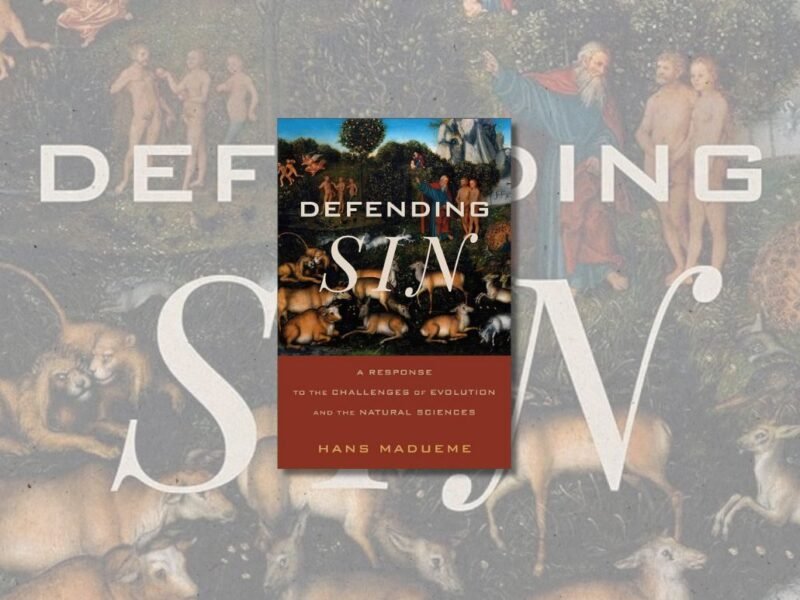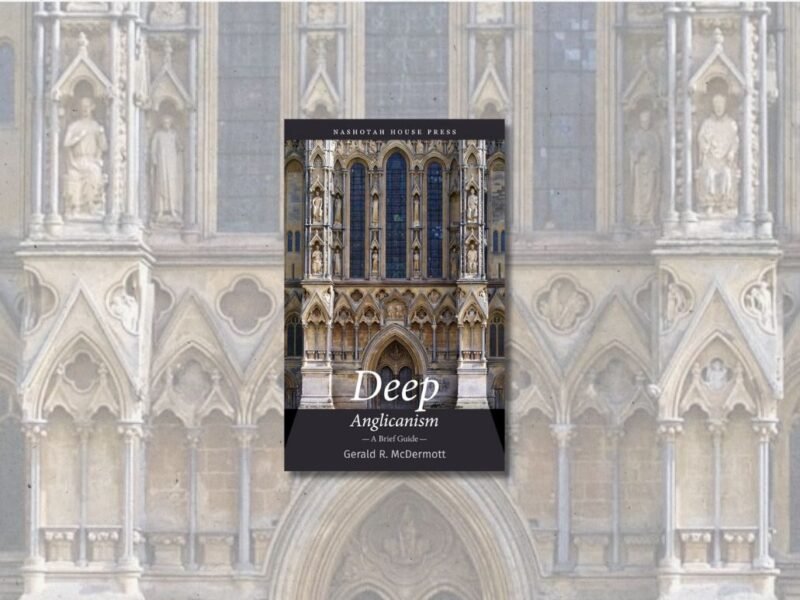The Apostles’ Creed: For All God’s Children. By Ben Myers. Bellingham, WA: Lexham Press, 2022. 48 pp. $17.99 (cloth).
As a parent of three young children, I am regularly humbled, challenged, and hopeful about the work of catechizing my family to know, love, and serve our Lord. Teaching my children not only to recite the I Believe, but to believe and understand it (in that order) is a lifelong task with many ups and downs. The Apostles’ Creed: For All God’s Children is a children’s book that summarizes the baptismal creed in accessible yet deep language embedded within spectacular illustrations. Written by Ben Myers and illustrated by Natasha Kennedy, this book has quickly become an essential resource for me, not only in my own family, but within the parish I serve.
The book is the first in a series from Lexham Press under the FatCat series name. Aside from being an apropos name for the mascot of the series hidden in every page, FatCat alludes to the catechism in abstract as a whole: “The catechism is ‘fat.’ It’s bursting at the seams with meaning, challenge, and comfort. It’s concise, but it’s also deep. Most importantly, it should be familiar” (2). Indeed, catechesis, the process of instructing neophytes in the faith, is so fat, so bursting at the seams that the process that began with 40 days of instruction eventually enlarged to encompass one to three years in the early church.
Simple Words, Deep Meaning
How does one make instruction in the faith not only accessible, but familiar? Repetition is certainly key (and the text of The Apostles’ Creed enables one to recite the Creed in its traditional English version), but so is the way one explains the meaning of the Creed. That is perhaps what is so astounding about the explanations provided by Ben Myers – they are simple, yet profound.
Take for example the first clause of the Creed, “I believe in God, the Father Almighty.” Myers begins with three questions: “Who is God? What is God like? Is God scary or unknown?” One can easily think of reasons why children might feel uncomfortable or even scared by the idea of God. God demands vulnerability (he knows everything), humility (he is almighty), and accountability (like a good earthly father he has expectations). And yet, how is it that God has revealed himself? “Jesus called God ‘Father.’ He depends on God and comes from God. Jesus lives in God forever with the Holy Spirit. And Jesus has made me live with God too. That’s why I can call God ‘Father’” (4). The depth available in these words is remarkable. Distinction between the Father, the Son, and the Spirit is clear, and yet so is perichoresis and even relations of origin.
Myers goes on to affirm eternal generation: “Jesus has always been with God. He is God’s great Son forever” (8), which he grounds not just as doctrine to believe, but as something to cling to in the economy: “He shares God’s life in a special way. But he wanted to share it with me too. So Jesus came from God. He came to me. Now Jesus has lots of brothers and sisters! Whenever I am with his brothers and sisters, I am with Jesus. Whenever I am with Jesus, I am with God. And God loves me as much as God loves Jesus” (8). Why does the Sonship of Jesus matter? Because when we are joined to the person and work of Jesus in baptism we are adopted into the family of God. Insofar as we are in Christ, in the Son, we are sons of God, caught up in his life and love.
God’s Life is Big Enough to Share
There are two major themes I’d like to highlight from the book: God’s life is big enough to share and Jesus’ hands drawing us with him into God’s life. God sharing his life with us is first discussed in the context of creation. Everything has its source and origin in God, the book affirms, but God’s making of everything was not just a demonstration of God’s power, authority, or wisdom, but because “God wanted Jesus to have sisters and brothers. That’s why I’m here. I’m here because God’s life is big enough to share” (6). The purpose of all creation is to be found in Christ, as his brother or sister, finding ourselves caught up in the life of God, a life that is so big, so expansive, so non-competitive, that it can be shared with us. Indeed, the Apostle to the Gentiles affirms that for the Christian, “your life is hidden with Christ in God” (Col 3:3).
This theme is further elucidated in the clause “and in Jesus Christ, his only Son, our Lord.” Here Jesus is depicted being baptized by John while the Spirit descends in the form of a dove. The subtleties of language and image are of great advantage in catechizing our children on this page. How does God share his life with us? Through the incarnation “Jesus came from God. He came to me” (8). How is it that we find ourselves in Christ, able to share the life of God? In baptism, because at our baptism we are united to the Body and its Head. “Whenever I am with his brothers and sisters, I am with Jesus. Whenever I am with Jesus, I am with God” (8).

This theme is again realized in the “I believe in the Holy Spirit clause,” where we are told “Jesus lives forever with God in the Holy Spirit. He shares God’s life in a special way. And Jesus sent the Holy Spirit to be with me. Now I share God’s life too and live in God” (24). Once again, this truth is depicted with a dove flying towards Jesus who stands with outstretched hands in the water. As I asked my children last night, “When did you receive the Holy Spirit? Where is Jesus in this picture?” “In the pool!” yelled my two-year-old. “Yeah, he’s in the water. When were you in the water?” “In my baptism!” declared my four-year-old. “That’s right, that’s when you were united to Jesus and received the Holy Spirit.” The tangible gift of sacrament, of a moment to look back on that was pure gift, is consistently depicted throughout this book, assisting parents to help their children look back to their baptism as the moment when they were washed, restored, and made alive.
How is it that we share in God’s life now? “Where is God in the world today? God’s life is shared with Jesus and with all his brothers and sisters. I can share God’s life, and so can you! God’s family is so big – and it’s always growing! God’s life is so big – and there’s always more to share! God’s love for Jesus is so big – big enough to include everyone!” (26). We see the dove above God’s people, now aflame, as tongues of fire rest above the disciples’ heads. In their midst stands a priest holding a paten and chalice for God’s people to share in God’s life. Again, the imagery and text work together, showing us that we live in Christ by the Spirit. By the Spirit we are empowered to share God’s life with the world, and by the Spirit simple gifts of bread and wine become the body and blood of Jesus. God’s life is available to all who trust in Jesus, for his church is catholic, and he makes those who trust in him holy, a communion of saints.
Christ’s Healing Hands
The second major theme, of how Christ’s hands reach out to save us from sin and death, begins pictorially with the clause “suffered under Pontius Pilate.” On the first page we see Jesus with arms outstretched to heal the paralytic lowered through the roof. On the opposite page we see Jesus bound, standing before Pilate as he washes his hands of the matter. The contrast is clear: Jesus used his hands to heal and to save, and yet the people refused his saving hands, bound them, and nailed them to the tree. “Did he deserve it? Did he ever do anything wrong? Why did he suffer so much” (12)? At this section my children squirm in discomfort. Why would anyone want to hurt Jesus? Why did he suffer? The injustice is palpable for them. In the next section we see Jesus crucified, hands and feet nailed to the tree. The book asks a really important question, “Was he really dead or was he just pretending” (14)? My four-year-old is actively exploring questions of what is real and what is make believe. It could be easy for children to think, or maybe even hope, that Jesus didn’t really die. Especially when that first death comes, whether a family member or pet or friend, death seems so final, so permanent, so evil. And yet we have a clear affirmation here to guide our children: “He really died. He did it freely. He laid his life down as a gift” (14). Again, the language is clear, but deep water. He really died, and he was killed, but he also died freely and as a gift. As kids grow up these distinctions and mysteries can be unpacked further. How does one get murdered freely? In what sense was Jesus killed and in what sense did Jesus give up his life? All of these conversations are concealed in these simple words for parents to explore when the time comes.
On the following page we see Jesus not with hands bound, not with hands pierced, but with scarred hands grasping our first parents to save them from sin, death, and the devil. “Where will I go when I die? Where do all the dead go? Wherever it is, Jesus went there too. He went down as far as we had fallen. He took death’s keys to free the captives. He overcame death with his life. He took Eve and Adam, our first parents, by the hand and made them his sister and brother. When I die, Jesus meets me there and takes me by the hand. He is God’s strong Son, my strong Brother” (16). Kennedy’s artwork here is designed to emulate Eastern Orthodox icons of the resurrection with Christ standing over Hades’ fallen doors, the keys of death and Hades on the ground, with Christ lifting Adam and Eve from their tombs by the hand. Death’s permanence, its terror, its darkness, are here undone in the descent of Christ into Hades. Indeed, the cross is “God’s new beginning” (14), for by it Christ has trampled down the gates of Hades that he might declare God’s name to his brothers (Ps 22:22) and form his church, for even the dead will worship him (Ps 22:29).

The significance of those pierced hands extends even to the final judgment, where Christ is seen in the new creation with saints clothed in white examining his scars. “What if I make too many mistakes? The one who died for me will be my judge. The one who loves me will have the last word. He has my future in his hands – and those hands have scars for me” (22). A clause that can and should inspire fear is contextualized for the young child in the assurance that it is the Son who has been appointed judge (John 5:22). The one who will judge me is the same one who was born for me, suffered for me, died for me, descended for me, ascended for me, and will return for me. These gospel truths are not mere facts for our children to learn, but hopes for them to cling to, especially in moments of weakness, doubt, or fear.
A Gift for Parents and the Church
In the back of the book resources are provided to encourage parents in catechizing their children. Parents are encouraged to focus on the three traditional elements of catechesis: the Apostles’ Creed, the Lord’s Prayer, and the Ten Commandments (a book on the Our Father is forthcoming from FatCat later this year). A short family prayer service with call and response, the text of the Creed, questions to ask children to help them pray, and passages of Scripture for each clause of the Creed are provided to aid parents. These resources are wonderful and may assist as Anglican parents lead their children in Morning and Evening Prayer.
The book also mentions the secret to catechizing young children: “Even though your children might not be readers yet, they’ll learn these words as you repeat them again and again each day” (35). We live in an age where age-appropriateness has been taken to an extreme, the results often being that children are rarely challenged but instead their capacities remain unexplored for far too long. Parents, your children are far more capable than you often suspect. They are listening even when you think they aren’t. They are learning all the time. Your patterns will be their patterns (some of which you and they will likely regret, others you and they will be glad for, and still others will be quirks and reminders of your love and care even when you’re gone). Now is the time to be praying with your children. They can learn the Creed and the Lord’s Prayer at a very early age (by two-years-old). Just as we grow in the depth of our knowledge in the meaning of the I Believe, the Our Father, and the Ten Commandments, so will they. Don’t think of their ignorance or still developing minds as a hindrance; think of them as jars to be filled with water that the Lord will turn to wine when his time has come. Myers quotes Martin Luther to this end, “I never move on from the childish doctrine of the Ten Commandments and the Apostles’ Creed and the Lord’s Prayer. I still daily learn and pray them with my little Hans and my little Lena” (35). It is in the regular repetition of these words, in the small opportunities for them to join in, in the liturgy of your home that God will meet your children and form them to not just be sheep who graze on his word, but sons and daughters who sit at table with their Lord.
I could go on and on about this wonderful book. The artwork is superb, delightful, warm, and reverent. The text is theologically sound, inviting, clear, and deep. This book is a gift for parents and even for clergy as we continue in the arduous task of raising up little Christians. At the core, this is a book that I believe points children to the living God. The inside covers feature FatCat looking on and rolling over as angels trumpet in worship within a temple inscribed with the phrase YHWH Shama, the Lord is there (Ezek. 48:35). This book points children over and over to the living God, to trust in him, believe in him, and find themselves in him. “God is Father, Son, and Holy Spirit – one God, one life, one Lord, who is over all and through all and in all. I know God’s life because I live inside it. I know God from the inside out” (34). I highly recommend this book as a tool to assist parents and clergy in the task of catechesis.






'Book Review: “The Apostles’ Creed: For All God’s Children”' has no comments
Be the first to comment this post!